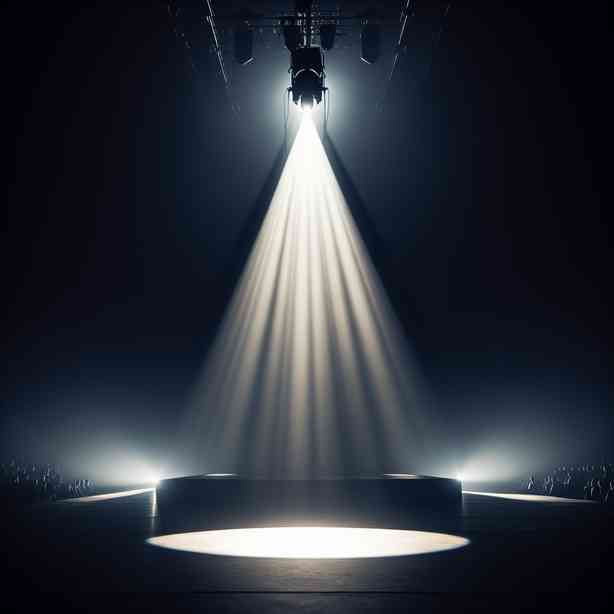
Lighting plays a crucial role in our everyday experiences, influencing our emotions, perceptions, and even our behavior. One aspect that stands out is the powerful impact of specific lighting cues—those moments when the right light creates an atmosphere that can make us feel exhilarated, inspired, or even invincible. From the warm glow of a sunset to the dramatic effects of stage lighting, the way light interacts with our surroundings can significantly shape our emotional responses.
When thinking about the lighting cue that made you feel powerful, it’s essential to understand the psychology behind light and its effects. Research has shown that lighting can affect our mood and energy levels. Bright, natural lighting tends to uplift spirits, while dim, warm lighting can create a sense of intimacy or comfort. Each type of lighting cue serves a purpose and carries with it potential to evoke a specific emotion or feeling—be it confidence, tranquility, or excitement.
Consider, for example, the effect of stage lighting in a theatrical performance. When a spotlight shines down on a performer—often a key moment in the performance—it highlights their presence, drawing the audience’s attention and creating a powerful atmosphere. This cue is not just about illuminating a person; it elevates them, almost like a declaration of their importance in that moment. It is no wonder that many performers describe this moment as transcendent, fostering a sense of authority and empowerment.
The environment in which we find ourselves also greatly influences our perception of light. A well-lit workspace, for instance, can enhance productivity and creativity. Conversely, harsh, fluorescent lights can drain energy and dampen enthusiasm. Understanding how light functions in various settings can help us deliberately choose lighting that boosts our sense of empowerment and control over our environment.
In architecture, designers utilize a combination of natural and artificial lighting to enhance the feeling of spaciousness and strength within a space. Large windows that invite sunlight not only improve mood but also make individuals feel more alert and engaged. This interplay of light and space can evoke feelings of liberation and strength—transforming a simple room into a motivating environment where one feels capable of taking on challenges.
One cannot overlook the profound impact of color temperature on our emotions. Warm light tends to evoke feelings of comfort and safety, while cooler light can stimulate alertness and concentration. Imagine walking into a room illuminated with warm, golden tones; it invites relaxation and peace. Conversely, a bright, cool light setting can invigorate and empower individuals, making them feel ready to tackle their day. By being mindful of the color temperature of lighting in our spaces, we can foster an environment that aligns with the emotional state we wish to cultivate.
The cultural context of lighting cues is equally important. Different cultures have distinct associations with color and light, influencing how people react to certain cues. For example, in some cultures, red light signifies celebration and joy, while in others, it may represent warning or danger. Understanding these cultural nuances can provide insights into how we can use lighting effectively to elicit desired emotions within a diverse audience.
As we delve deeper into the realm of lighting and empowerment, one must consider the role of personal experiences and memories connected to specific lighting cues. A memorable moment—perhaps a significant event illuminated by a sunset—can become etched in our minds, creating an emotional anchor associated with that light. This personal connection can resurface feelings of empowerment when one encounters similar lighting in the future, reinforcing the idea that lighting is not merely a physical phenomenon but a deeply interconnected emotional experience.
To further illustrate this, think about how lighting can amplify moments of victory. Athletes often highlight the thrill of being under the stadium lights, where the entire arena focuses on their performance. In these moments, the lighting becomes a symbol of achievement, energizing both the performers and the audience. It transforms the ordinary into the extraordinary, creating a shared sense of power and triumph that resonates beyond the immediate experience.
In our everyday lives, we can harness the power of lighting to create environments that bolster our sense of empowerment. Simple changes, such as installing dimmer switches to control the mood or using smart lighting systems that adjust according to the time of day, can greatly enhance our emotional landscape. Adding elements like lamps with adjustable brightness or color can allow for greater control over our surroundings, enabling us to curate experiences that align with our desired state of mind.
Moreover, it is important to recognize that lighting is not only about installation or design but also about behavior and interaction. Being aware of how we respond to different lighting conditions can empower us to make conscious decisions that support our well-being. For instance, seeking out natural light during the day can boost mood and energy levels, while reducing exposure to harsh artificial lighting during evening hours can promote better sleep quality. Such practices underscore how proactive engagement with our environments can yield a greater sense of control and empowerment.
In conclusion, understanding and utilizing lighting cues can profoundly shape how we feel and interact with our environments. Whether it’s the invigorating brightness of a sunny afternoon or the dramatic spotlight of a stage, each light cue carries the potential to evoke powerful emotions and foster a sense of control and empowerment. By being mindful of our surroundings and the types of lighting we employ, we can create spaces that not only elevate our spirits but also inspire us to embrace our personal power. The next time you encounter a lighting cue that resonates with you, take a moment to appreciate its impact, as it may just be a catalyst for a profound sense of empowerment and clarity in your life. Understanding this dynamic will enable you to not only enhance your own experiences but also curate environments that uplift and empower those around you.


